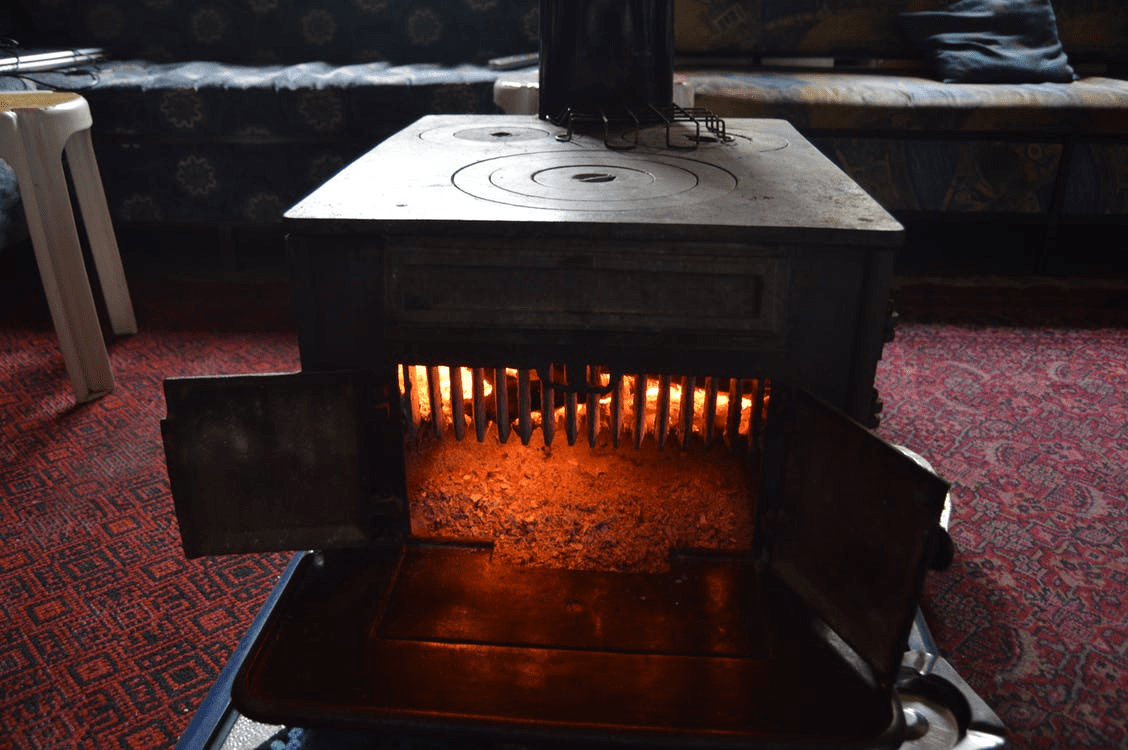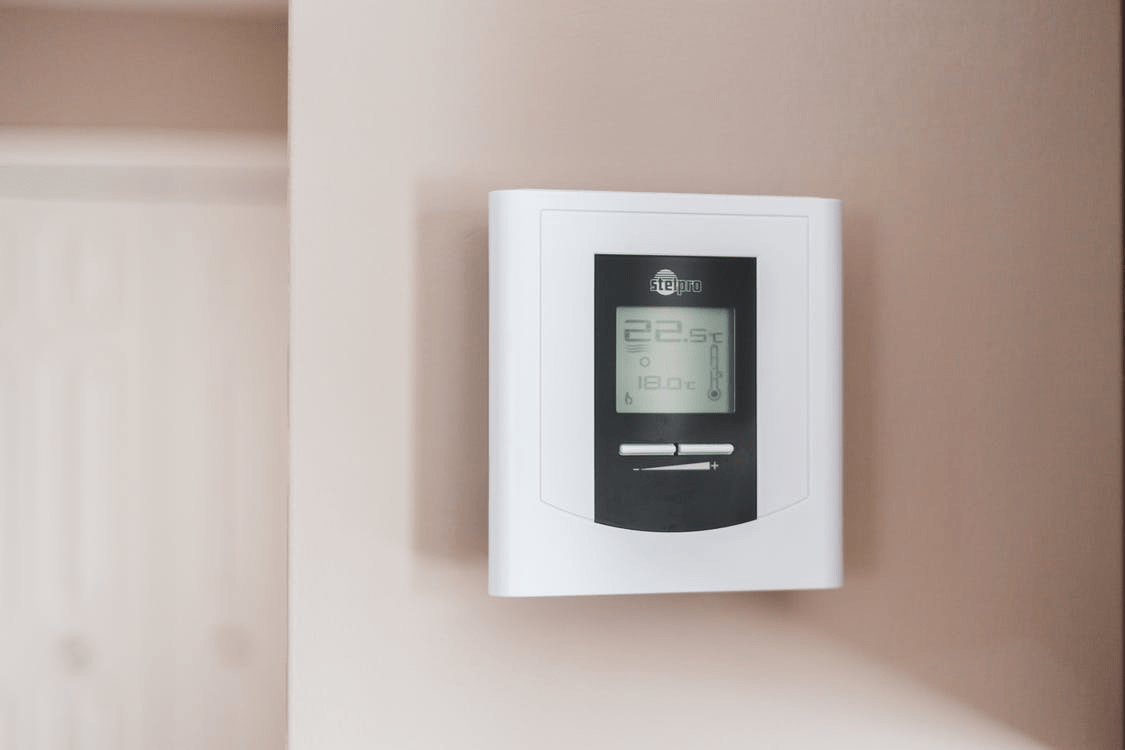
Energy cost has been increasing annually throughout the U.S., resulting in heating and cooling becoming more costly.
What is the cheapest way to heat a home?
Heating and cooling alone represent about 43% of all electricity usage and the biggest energy costs. Electricity continues to be popular for heating homes in the U.S. Around 37% of households use it as the primary heat source for heating.
Many homeowners have other options that will reduce their heating bills. Some heating systems are cheaper to install. Leading experts say switching to certain heater types can dramatically reduce electricity costs each month.
Here is a guide to the cheapest heating options on the market and a quick preview of the most efficient fuel for heating.
What’s the Cheapest Way to Heat a Home 2022? Top 7 Options
Are there heating solutions that work best?
In many regions, winters can become quite unpleasant. You also have short days, snowy conditions, rough roads, and cabin fever to deal with on a winter day.
All these elements make heating in winter very important. Fortunately, some options can help heat your home but still keep heating costs low.
1. Gas Furnaces
Close to half of homes use energy-efficient natural gas for heat. Access to natural gas offers you access to many gas-powered home heating systems.
However, the most common natural gas heating system in the U.S. is the gas furnace. These systems are popular in the Northern and Midwest U.S. where freezing temperatures are prevalent.
The inner workings of a gas furnace are easy to understand:
- The gas furnace works by combusting natural gas on a burner
- A heat exchanger at the top of the burner then collects the heat
- Next, a blower sucks cool air from your space and blows it over the heat exchanger
- The cold air collects heat from the heat exchanger and blows through ductwork to supply vents in your home
- The process repeats itself until the temperatures reach the thermostat’s set point
A chimney vents out the exhaust gas from the system. Other names for furnace and boiler systems are “ducted warm-air systems” and “forced warm-air systems” because powerful fans push warm air through the ducts.
Older furnace systems vent out exhaust gases, wasting close to 30% of the fuel energy. Modern systems come with an inducer fan for pushing air out of the chimney to reduce heat waste.
The difference between boilers and furnaces is that boilers distribute heat using hot water and furnaces generate heat using warm air.
Pros
- Modern natural gas furnaces have filters in the ductwork to reduce allergens in indoor air
- Forced air systems are inexpensive to own
- Boilers do not consume as much energy as other heat sources once running
- You can integrate dehumidifiers or humidifiers to track humidity levels
- A forced-air system can work with a cooling system during summer
Cons
- The furnace fans can be noisy
- Boiler pipes may leak if left cold and unattended for long
- Installation is expensive if you do not have ductwork already present
- Tears or holes in ducts can lead to inefficiency
- Heated air is uncomfortable without proper treatment
2. Air-Source Heat Pumps
Reversible or air-source heat pumps are a popular home heating solution. The pump moves heat from one area to another like a water pump.
An air-source heat pump is most common for summer use because it transfers heat from the indoor space to the outside. You also get the full benefits of heating and cooling, so staying warm in winter is possible.
Think of a reversible heat pump as a two-way air conditioner. An air conditioner’s process is reversed, so the unit transfers warm air into your room.
The heat pump uses a refrigerant to extract heat from the outside. Ducted air-source pumps use a network of ducts to distribute warm air to different rooms. Vents and louvers in each room control airflow.
Pros
- Reversible heat pumps have an efficient Seasonal Energy Efficiency Ratio (SEER) rating in the mid-20s
- Pumps are quieter than central forced-air systems
- You can use the same unit for heating and cooling
- Each room in your home has controls for individualized heating
Cons
- Might be difficult to install in an older home
- Tears or holes in ducts lead to decreased efficiency
- An intensive installation process
- You must have ductwork in the home, and installation can be expensive
3. Ductless Pump Heating Systems
Ductless heat pumps work like their reversible cousins but without ducts. Ductless heating units are individual appliances installable in different rooms. The heating system will not cause a major dent in your bank balance.
Most ductless heat pumps come with infrared remote controls. Others allow you to control their functions using a smartphone through smart AC controllers.
However, ductless systems come in different flavors. These include:
- Mini-split heat pumps—These systems have indoor and outdoor units. The outdoor unit has an evaporator, cooling fan, and compressor, while the indoor has a condenser. A small pipe bundle passing through your home’s wall enjoins both units.
- Portable heat pumps—These units are handy and small enough to use in a small area. You only need to plug the unit in and they do not need outdoor access to dispel exhaust air.
- Window heat pumps—These units are in compact packaging and easy to install. You can install the appliance on small wall cutouts or windows.
Pros
- Ductless reversible heat pumps are some of the most efficient units with SEER ratings within the high 20s
- Fast installation at a cheap price
- You can use the same appliance for cooling and heating
- Quiet operations because sound levels are in the 65 dB region
Cons
- Expensive to purchase
- The units are not effective in extreme cold
4. Geothermal Heat Pumps
All the heat pumps above are air source heat pumps—they get heat from the air and transfer it.
Another heating system to consider is the ground source heat pump (geothermal heat pumps). These units transfer heat between your indoor space and the ground. The ground has a near-constant temperature of about 50 to 60 degrees Fahrenheit.
A geothermal heat pump extracts heat from the ground and pumps it around your home. The pump uses a vapor-compression refrigeration cycle to transfer heat. Some systems use water as a heat source because it maintains a constant temperature.
Sub-types of geothermal systems are:
- A closed-loop system that recycles the same refrigerant throughout
- An open-loop system that repeatedly requires introducing new fluid in the loops
A closed-loop geothermal heat pump uses several components to keep your home warm, including:
- Compressors
- Refrigerant lines
- Reversing valves
- Indoor blowers
- Evaporator coils
- Thermal expansion valves
- Condensers
Geothermal heat pumps are at the top of the cheapest way to heat a home list because they only require electricity to move heat and not generate it. However, the installation process is lengthy and expensive. Ground source heat pumps are an excellent solution if you are constructing a new home.
Pros
- Minimal carbon footprint
- Long-lasting
- High-efficiency systems with a Heating Seasonal Performance Ration (HSPF) rating as high as 12.5
Cons
- A lengthy installation process that requires specialized equipment
- The initial cost is high
5. Space Heaters
The direct heating space heaters emit heat into your indoor space. Instead of heating the air and redistributing heat, the heaters take heat from the source.
The most common space heaters are:
- Electric space heaters—The units use electricity to generate heat and warm up your room.
- Infrared heaters—They convert electricity into radiant heat.
- Oil-filled radiator heaters—This electric space heater warms oil inside it for heat transfer to the air in your space.
- Propane heaters—The units combust propane to warm and heat the room.
- Convection heaters—The units blow air across hot metal coils and transfer the heat to your space.
Pros
- Low initial cost
- Easy to move from one room to another
- A plug allows easy use in each room
Cons
- Using electricity is expensive
- Propane heaters require ventilation for safe operation
- Electric space heaters have low residual heating
6. Radiant Floor Heating
Radiant floor heating is an old but less common home heating system.
The option heats your floor and keeps the room warm and is not a direct heat source. Tubes under the floor circulate hot water. The hot water radiates heat warming up the floor and your room.
The system has a pump that helps move and recycle the hot water.
Pros
- They require no vents or chimneys
- An efficient way to heat your space without using large amounts of electricity
- Low maintenance
Cons
- You cannot use carpets and thick tiles on the floor
- A time-consuming installation process that requires a professional
- Expensive installation
7. Fireplaces

Indoor fireplaces are an integral part of a room décor that also offers a cozy environment. Gas or wood fireplaces burn fuel in an open flame and a chimney vents out the exhaust gases.
Pros
- Low maintenance
- Help create a cozy ambiance
- Minimal running costs
Cons
- Require ventilation
- Getting the fire running can take a while
- Require regular cleaning
Types of Heating Fuels
Heating fuel is a necessity in a cold climate. However, there are so many types of heating fuels that choosing the cheapest can be hard.
Here is a comparison of the four main types, their pros, and their cons.
1. Natural Gas
Most people use natural gas for cooking meals and heating their homes from various sources. The key component of natural gas is methane. The compound comes from land-based and sea sediments, making this a fossil fuel.
Pros
- Relatively cheap to install and maintain
- Emits carbon dioxide when burning only, which helps reduce Greenhouse Gas (GHG) emissions when using a high-efficiency appliance
- Easy to find and safe for use
Cons
- Methane is a potent GHG and presents at 80% to 95%
- A non-renewable fossil fuel
- May explode
2. Propane
One of the most popular fossil fuels is propane (LP), which comes from processing and is in a liquid form. LP is a relatively clean fuel for heating and cooking around the home.
Pros
- Clean burning fuel with low emissions
- Suitable for heating and cooking
- Available in most locations
Cons
- Emits GHGs, such as carbon dioxide and water vapor
- Installation can be expensive depending on your location
3. Heating Oil
Petroleum distillation produces heating oil as one of the crude oil byproducts. The oil has similar properties to diesel, but the composition is different depending on the application.
Pros
- Usable for cooking when required
- A separate storage tank of heating oil is cheaper than electricity because pricing is by volume
- Easy to find and install
Cons
- Expensive maintenance
- A non-renewable energy
4. Coal
The most abundant fossil fuel is coal. People use it to generate electricity and heat homes. However, coal is a dirty fuel that produces large amounts of carbon dioxide on burning.
Pros
- Available in most states
- Cheap to produce
Cons
- Produces a large amount of carbon dioxide that contributes to global warming
- It is a dirty fuel with many pollutants such as sulfur and ash that can cause respiratory issues
5. Electricity
The world’s most popular heating fuel, electricity is easily available for most people and is relatively clean. However, using electricity to heat a home is a safety concern and power outages may mean spending a night in the cold.
Pros
- Low installation costs
- Relatively easy to install and maintain
Cons
- You need a backup source or working fireplace in case of a power outage
- Electricity plants generate high carbon dioxide emissions
- Incomplete combustion may release Nitrogen Oxides (NOx) which contribute to acid rain and smog
6. Wood

Wood burning has been a popular way to heat homes for centuries. The fuel is renewable, but there are concerns about its environmental impact and sustainability.
Pros
- Emits some heat when burning without depending on another secondary heating system
- Can be harvested sustainably
Cons
- Emits carbon dioxide when harvesting and processing
- Deforestation leads to loss of habitat for animals and soil erosion
Accessories that Help Cut Your Heating Bill
Along with these heating options and fuels, accessories can help make the heating process much smoother. You can use a smartphone to control most of these accessories.
Here are the accessories that will also help slash your utility bills.
1. Smart AC Controllers
A smart AC controller is the best choice if you are using a ductless heating solution, such as a portable air conditioner or mini-split. Use your smartphone to control the unit right from your bed.
Smart AC thermostats allow excellent flexibility for your heating. These devices come with features that make them a unique addition that can help streamline heating costs. These include:
- Air filter status updates
- Location-based triggers
- Intelligent temperature settings
- Usage history
- Humidity triggers
- Weekly schedules
2. Programmable Thermostats

Heating a home is good, but coming back to a cold house after a long day out can be uncomfortable.
Heating systems take time to work and warm your home. The solution is to install a programmable thermostat.
Some thermostats allow you to operate the heating system from anywhere in the world thanks to their Wi-Fi capabilities. Smartphone apps also offer you total control of your home heating.
Consider using programmable thermostats with your ducted heating system so you get back to a warm, cozy home.
3. Humidifiers
The skin can get uncomfortably dry in the winter months and your nose gets itchy. This is a common predicament for households, especially when you stay indoors for many hours.
Using heating appliances, such as space heaters and other direct heating units, sucks air moisture—creating an uncomfortable indoor environment. The best solution is a humidifier.
Humidifiers help keep your indoor moisture levels at a comfortable level. Benefits of using a humidifier include:
- Reducing the number of viruses and bacteria in your home
- Preventing damage to your wooden furniture
- Ensuring your entire home feels warm
- Preventing dry skin and improving skin health
- Relieving allergy symptoms
What is the Cheapest Way to Heat a Home? The Conclusion
The average household spends about $746 on heating using natural gas and about $1,268 on heating using electricity. Natural gas is the most efficient means of heating a home, which is why many households are using it.
While the heating system and fuel type you are using make a vast difference, you can save more energy and money through proper equipment maintenance and home insulation. Strategic use of heating accessories, ventilation, insulation, and proper maintenance can save around 30% on your heating bill.
Improve the insulation of your home first before installing or replacing the heating system. When buying or renting a home, make sure the insulation is up to standards to reduce energy waste as well.

In her 25-year career, Steph Wilkinson has been involved in the acquisition, marketing and sales of over $3 Billion dollars of residential real estate. A number of years ago, Steph transitioned into Brokerage Leadership for National real estate brands and tech start-ups. She has served as a Business Strategist for real estate agents and brokerages alike and is also a real estate coach and trainer. In her new role with the Iconic Team, Steph will be responsible for the growth of the team and will be working with all of our agents to increase their productivity and bottom line.




